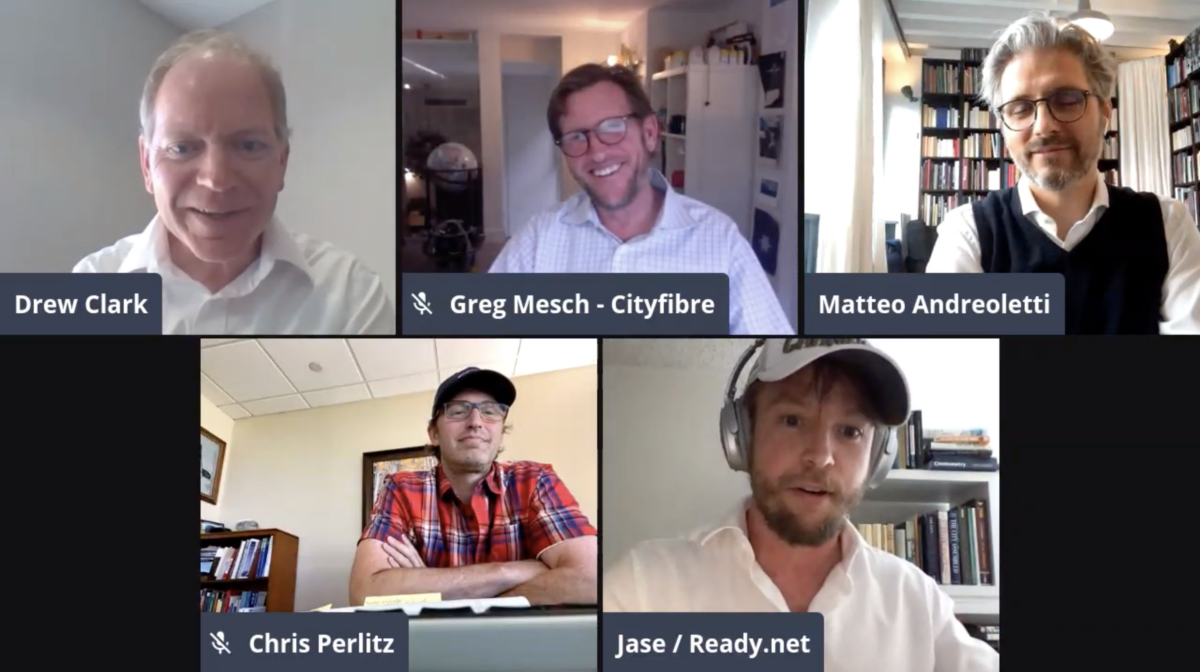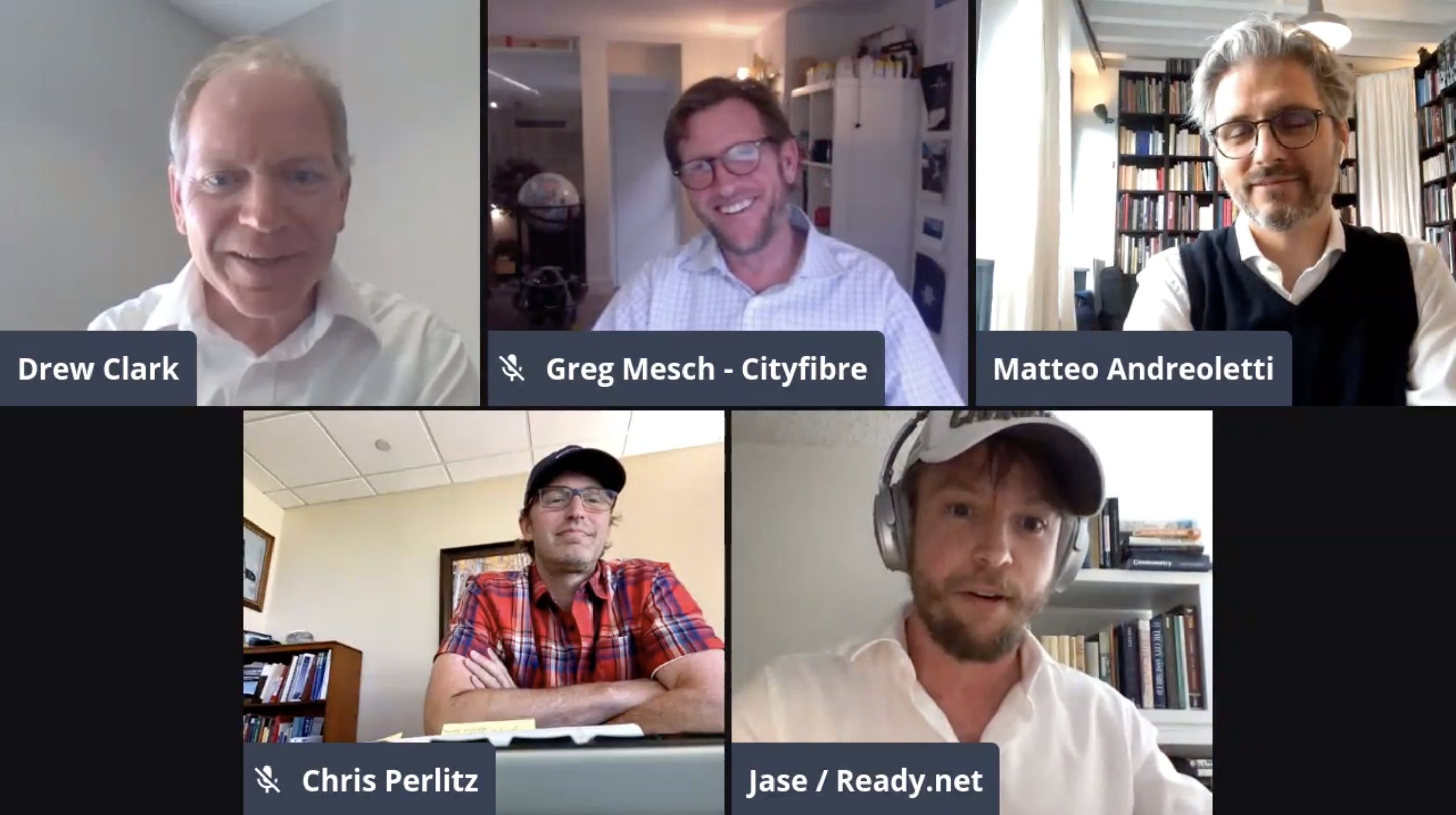U.S. Should Follow UK in Open Access Infrastructure Investment, Say Broadband Breakfast Panelists
June 10, 2020 — The U.S. should follow the European example of investing in wholesale open access infrastructure models, said panelists at a Broadband Breakfast Live Online event Wednesday. One company that has found success using a purely wholesale model is the U.K.’s CityFibre. “We chose a model t
Em McPhie

June 10, 2020 — The U.S. should follow the European example of investing in wholesale open access infrastructure models, said panelists at a Broadband Breakfast Live Online event Wednesday.
One company that has found success using a purely wholesale model is the U.K.’s CityFibre.
“We chose a model that was pure wholesale, because we knew that there were enough retail customers there that did not own any of their own infrastructure, and that if we could show them a scale operator like ourselves that could give them 10 times the speed at 50 percent of the cost and we could get to scale, then they would move their traffic over,” CityFibre CEO Greg Mesch explained.
While this approach has not yet proved workable in the U.S., Mesch said he believed it could still be successful if multiple service providers committed.
“We’ve led a reference design model and then a regulatory model that is maybe fit for purpose for all the Western countries to look at, which is, how would you get a pure fiber provider going and get him in a state where he can really roll out at scale across the country?” Mesch said.

Screenshot of panelists at the Broadband Breakfast Live Online event
The U.S. is held back by a weaker regulatory market than that of the U.K., and also faces substantial lobbying from the telecom and cable industries, said Municipal Capital Markets Group Managing Director Chris Perlitz.
“The struggle we have is that the [Federal Communications Commission] has been stifling our ability and rather stifling the local government’s ability to make proper decisions,” Perlitz said. “And then there’s been a lot of smoke and mirrors in the market, generally not really being clear as a path of how you go about this.”
Matteo Andreoletti, head of infrastructure equity in Europe and North America for the Smart City Infrastructure Fund, agreed with the importance of CityFibre’s model.
“We think that the solution will need to actually have a combination of technologies, but the number one criteria that we use is to promote the open access wholesale model…and the ability of deploying this model at scale to provide reliable connectivity to a high number of cities,” Andreoletti said.
Andreoletti illustrated his point with the example of Smart City Infrastructure Fund-backed SiFi Networks, a private developer of open-access fiber networks in Fullerton, California.
“What we really liked about the business model was their intention to provide a service for tier two and tier three cities —midsize cities that often neglected, or are not able to access the right level of financing and capability,” he said.
Development in smaller municipalities is important in “avoiding a major digital divide, but also it’s a way to stimulate economic growth, because better connectivity drives businesses and preserves competitive disparities,” Andreoletti added.
Ready.net Founder Jase Wilson pointed out the importance of looking into the different ways of capturing value from remote services.
“We’re spending over a trillion dollars a year as a country on health care…and yet there are hundreds and hundreds of telehealth capable public health institutions in the United States, but the people that don’t have access to the internet and strong enough connection aren’t able to do it and participate in it,” he said.
Investment horizons need to be long, Perlitz said, pointing out that he has been working with some healthcare organizations who are just now starting to receive return on telemedicine investments for the first time.
Digital infrastructure investment does not fall into the typical private equity model of three to five year return on investment, Andreoletti added, and current business models depend on visionary cities who are willing to invest in smart city technologies long term.
“The struggle that I’ve seen is trying to get the cities to understand the tangible value,” Perlitz said. “…It compresses the return on investment pretty fast, but it’s hard for them to get their head around, because accounting for those values is hard to do.”
In spite of the longer timeframe, Mesch emphasized the eventual value of investing in pure fiber open access infrastructure.
“If you do it, you will increase the GDP growth in your city by one to two percent per year for the next decade and beyond,” he said.
Editor’s Note: All of these topics will be explored in greater length at Broadband Breakfast’s Digital Infrastructure Investment Physical/Virtual Event at the Broadband Communities Summit. Register here to attend Digital Infrastructure Investment.










Member discussion